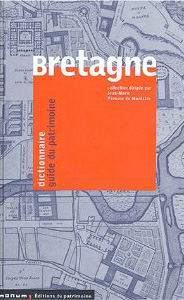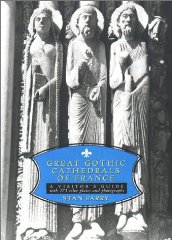Strict Standards: Declaration of McalendarControllerMCalendar::display() should be compatible with McalendarController::display($cachable = false, $urlparams = false) in /home/nrnvguvu78sn/public_html/components/com_mcalendar/controllers/mcalendar.php on line 0
Strict Standards: Only variables should be passed by reference in /home/nrnvguvu78sn/public_html/components/com_mcalendar/controllers/mcalendar.php on line 34
Strict Standards: Only variables should be passed by reference in /home/nrnvguvu78sn/public_html/components/com_mcalendar/controllers/mcalendar.php on line 35
Strict Standards: Only variables should be passed by reference in /home/nrnvguvu78sn/public_html/components/com_mcalendar/controllers/mcalendar.php on line 36
Strict Standards: Only variables should be passed by reference in /home/nrnvguvu78sn/public_html/components/com_mcalendar/controllers/mcalendar.php on line 37
Strict Standards: Only variables should be passed by reference in /home/nrnvguvu78sn/public_html/components/com_mcalendar/controllers/mcalendar.php on line 38
Basilique Saint-Sauveur de Rennes
(Rennes, France)
The Basilica of Saint-Sauveur Rennes is a minor basilica of the Roman Catholic Church, under the paronage of Our Lady of Miracles and Virtues. The cult of Our Lady is important as many miracles attributed to her.
The facade is located Place Saint-Sauveur, in the heart of the historic city center of Rennes. Rebuilt in 1703 in a style classic after the collapse of the church medieval basilica is particularly noted for its furniture: canopy the altar, pulpit in wrought iron, organ.
It is located in the heart of historic Rennes, which was once the capital of Brittany. It is situated at the termination of Saint-Sauveur Street on which its façade faces.
As the original Gothic church partially collapsed in the year 1682, the Classical style church that can currently be seen was constructed beginning in 1703 and consecrated in August of 1719.
In the year 1793, during the French Revolution, the church was made into a Temple of Reason, and the miraculous statue of Our Lady was destroyed. It was not until 1802, after the end of the Terror, that the church was opened again to worship. The church was made into a minor basilica in 1916 by Pope Benedict XV.
The facade is located Place Saint-Sauveur, in the heart of the historic city center of Rennes. Rebuilt in 1703 in a style classic after the collapse of the church medieval basilica is particularly noted for its furniture: canopy the altar, pulpit in wrought iron, organ.
History
The church is in the northwest of the city center of Rennes , in the heart of the conservation area . Located Place Saint-Sauveur, it is the end of a perspective starting down the site of the Parliament of Britain and formed by the streets of Guesclin, the Hermine and Brilhac. It is also the corner of the rue Saint-Sauveur.
Only its east and south facades are visible, the rest being attached to buildings, including the rectory west, 2 rue Saint-Sauveur. The facade is overlooking the Saint-Sauveur, while the south façade opens onto Rue Saint-Sauveur, and beyond, the garden of the hotel Blossac.
The present church was built in the early eighteenth century , replacing a chapel whose origins coincide with those of the city. According to a hypothesis of Rennes historian Louis Pope, the location of the chapel at the intersection of cardo and decumanus , correspond to that of the Basilica of the temple dedicated to March Mullo on the forum of the Gallo-Roman Condate .
The first written records mentioning a chapel Saint-Sauveur in Rennes dating from the twelfth century . It is then attached to the parish of All Saints. The chapter of Rennes donated to the abbess Matilda the Abbey of Saint-Georges in January 1230, church is growing at the city in the following centuries, with multiple enhancements furniture and several operations of extension and refurbishment. From the miracle of 1357 (see below), the cult of Our Lady grows particularly. A beam of glory bearing a crucifix and two images of Saints is installed in 1450 . With population growth, the need to split the parish of All Saints, including Saint-Sauveur still depends arises: on 24 April 1667 , the Bishop of Rennes Charles-François de La Vieuville therefore erects Saint-Sauveur parish church . A brotherhood was founded in 1670 on the initiative of St. John Eudes in honor of Our Lady of Miracles and Virtues and the Holy Heart of Mary .
On 7 March 1682 , the west gable of the building collapses, making improper church worship. After several months during which the Blessed Sacrament is carried to the chapel of St. James, the cult up in the church partially demolished. The General of the parish wants to rebuild the church. It will take nineteen years to raise funds and buy adjacent plots. The first deliberation to launch the reconstruction work took place on 12 July 1701 . The first stone was laid two years later, on 24 July 1703 , by the steward of Britain Louis Béchameil Nointel . In 1710, a royal lottery is held to raise 300,000 pounds .
Plans are made by the architect François Huguet also responsible crowning the towers of the Saint-Pierre cathedral nearby, and a convent building for Saint-Yves hospital . According to the wish of the General of the parish, worship is not interrupted by work. The architect decided to focus the new church from east to west, the opposite of the former. The work begins with the chorus once it has been completed, the Blessed Sacrament is carried and the old church was finally demolished. Of it only remains a big, preserved in the British Museum . The new policy also opens the front on the bottom instead of the large end of the Mob.
The new church was consecrated on 5 August 1719 when only the chorus (blessed that year) and cross completed. The fire of 1720 Rennes damage the roof, which collapsed, and furniture, but do not stop the project. The major work of the church was completed in 1728 , François Huguet died in 1730 . Several architects succeeded him to complete the building. Forestier said Elder makes a significant change to the plans: the destruction of the place where the big end of the Mob, replaced by street Clisson and St-Sauveur and the construction of the rue du Guesclin in the axis of the church, led him to redesign the facade in order to integrate this new perspective. It also produces the plane of the portal and its leaves . For economy, the end result, however, is less ambitious than the draft Huguet . Antoine Forestier said Young drew up the plans of the dome of the tower, while Daniel Grandmaison Chocat realize those Belfry in 1741, accompanied by quotes . The conduct of business by Forestier is attested in 1758 , and the altar, symbolizing the end of the work is devoted in 1768 .
In 1793 , during the Revolution , the church became Temple of Reason , and Temple of the Supreme Being in 1794 . The miraculous statue of Our Lady is destroyed. Is there then hold public meetings. It announces including confirmation of John Leperdit in his place as mayor of the city after the end of the Terror . In 1795 , after the approval of the public exercise of the Catholic religion by the National Convention , a citizen petition is unsuccessful restoration of the church . Nevertheless, the constitutional Bishop Claude Le Coz gets the district renting premises, 27 March 1795 (7 Germinal III) . Saint-Sauveur is officially returned to worship the 30 September 1802 (8 vendémiaire year XI) by the prefect 'of Ille-et-Vilaine , Jean-Joseph Mounier .
During the nineteenth century , the furniture is enhanced with the arrival of the high altar ( 1827 - 1829), a paschal candlestick ( 1846 ), a Way of the Cross (c. 1860 ) and the choir organ ( 1894 ). The architect Leroux makes a first restoration from 1842 , in order to fully complete the church. The statues of Peter and Paul, by Jean-Baptiste Barré , appear on either side of the choir. The altar of the Sacred Heart and St. Louis and St. Anne are redone and receive new tables. Father Brown conducted a second restoration from 1870 on the altars of the transept. He creates in 1875 the altar dedicated to Our Lady of Miracles and Virtues, in the north aisle. Three bells are then installed in the tower in 1876 . Finally, a paving of ceramic replaces tomette original in 1886 . The church also has, between 1832 and 1855, a telegraph Chappe : item 4 of Rennes and the number 10 line Avranches - Nantes.
The church was built in minor basilica on 27 April 1916 by Pope Benedict XV . The seat of the parish was transferred to St. Peter's Cathedral in 1939. With the reorganization of parishes in 2002 the Archdiocese of Rennes, Dol and Saint-Malo , Saint-Sauveur found a parish assignment, between the Saint-Pierre Cathedral and the church of Saint-Etienne . Basic Information
| Year consecrated: | 1768 |
| Ecclesiastical status: | Minor Basilica |
| Architectural style: | --- |
| Address: | 3 Rue Saint-Sauveur Rennes Bretagne, France |
| Coordinates: | 48.1118, -1.68177 |
| Website: | http://rennes.catholique.fr/?Paroisse-St-Pierre-St-Etienne-de |
| Phone: | +33 9 63 04 08 77 |
| Hours: | Sunday 8:30 AM 5:30 PM |
| Cost: | --- |
| Transportation: | --- |
| Lodging: |
Note: This information was accurate when first published and we do our best to keep it updated, but details such as opening hours can change without notice. To avoid disappointment, please check with the site directly before making a special trip.
Map
Resources
-
Great Gothic Cathedrals of France: A Visitor's Guide
Stan Perry
Studio
April 23, 2001
ISBN: 0140297073 -
The Christian Travelers Guide to France
Mark Konnert
Zondervan Publishing Company
April 1, 2001
ISBN: 0310225884 -
-
-
The Pilgrim's France: A Travel Guide to the Saints
James Heater
Inner Travel Books
October 1, 2004
ISBN: 0971986010 -
-
-













